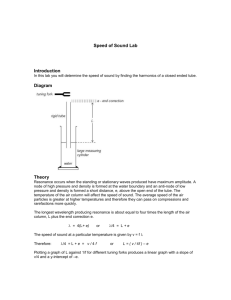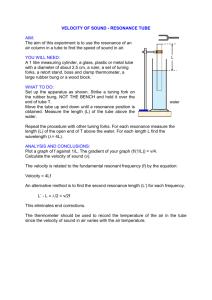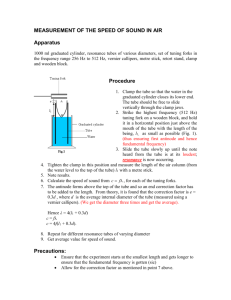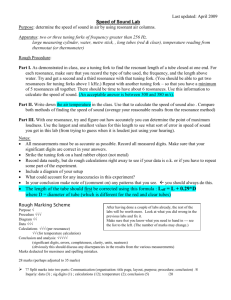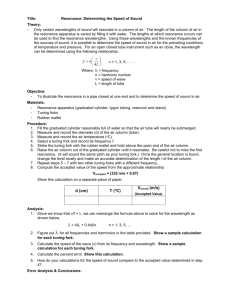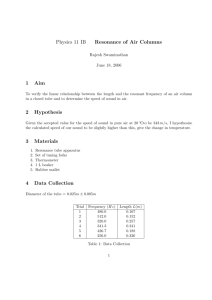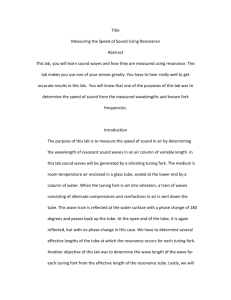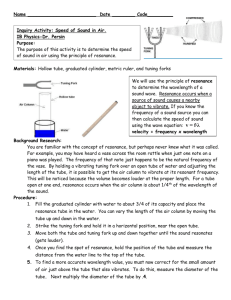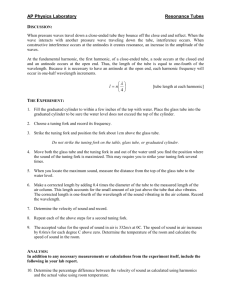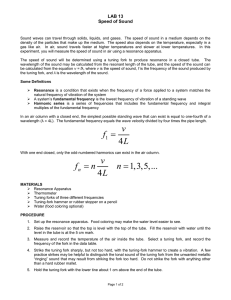AP Physics Lab
advertisement
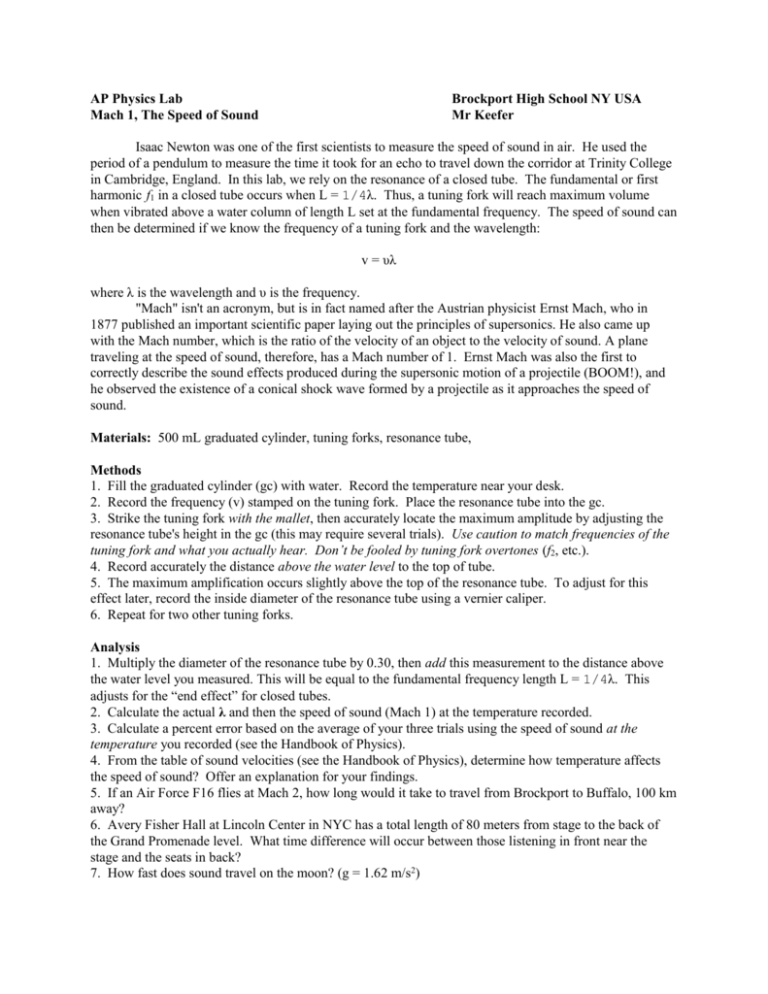
AP Physics Lab Mach 1, The Speed of Sound Brockport High School NY USA Mr Keefer Isaac Newton was one of the first scientists to measure the speed of sound in air. He used the period of a pendulum to measure the time it took for an echo to travel down the corridor at Trinity College in Cambridge, England. In this lab, we rely on the resonance of a closed tube. The fundamental or first harmonic f1 in a closed tube occurs when L = 1/4λ. Thus, a tuning fork will reach maximum volume when vibrated above a water column of length L set at the fundamental frequency. The speed of sound can then be determined if we know the frequency of a tuning fork and the wavelength: v = υλ where λ is the wavelength and υ is the frequency. "Mach" isn't an acronym, but is in fact named after the Austrian physicist Ernst Mach, who in 1877 published an important scientific paper laying out the principles of supersonics. He also came up with the Mach number, which is the ratio of the velocity of an object to the velocity of sound. A plane traveling at the speed of sound, therefore, has a Mach number of 1. Ernst Mach was also the first to correctly describe the sound effects produced during the supersonic motion of a projectile (BOOM!), and he observed the existence of a conical shock wave formed by a projectile as it approaches the speed of sound. Materials: 500 mL graduated cylinder, tuning forks, resonance tube, Methods 1. Fill the graduated cylinder (gc) with water. Record the temperature near your desk. 2. Record the frequency (v) stamped on the tuning fork. Place the resonance tube into the gc. 3. Strike the tuning fork with the mallet, then accurately locate the maximum amplitude by adjusting the resonance tube's height in the gc (this may require several trials). Use caution to match frequencies of the tuning fork and what you actually hear. Don’t be fooled by tuning fork overtones (f2, etc.). 4. Record accurately the distance above the water level to the top of tube. 5. The maximum amplification occurs slightly above the top of the resonance tube. To adjust for this effect later, record the inside diameter of the resonance tube using a vernier caliper. 6. Repeat for two other tuning forks. Analysis 1. Multiply the diameter of the resonance tube by 0.30, then add this measurement to the distance above the water level you measured. This will be equal to the fundamental frequency length L = 1/4λ. This adjusts for the “end effect” for closed tubes. 2. Calculate the actual λ and then the speed of sound (Mach 1) at the temperature recorded. 3. Calculate a percent error based on the average of your three trials using the speed of sound at the temperature you recorded (see the Handbook of Physics). 4. From the table of sound velocities (see the Handbook of Physics), determine how temperature affects the speed of sound? Offer an explanation for your findings. 5. If an Air Force F16 flies at Mach 2, how long would it take to travel from Brockport to Buffalo, 100 km away? 6. Avery Fisher Hall at Lincoln Center in NYC has a total length of 80 meters from stage to the back of the Grand Promenade level. What time difference will occur between those listening in front near the stage and the seats in back? 7. How fast does sound travel on the moon? (g = 1.62 m/s2)
